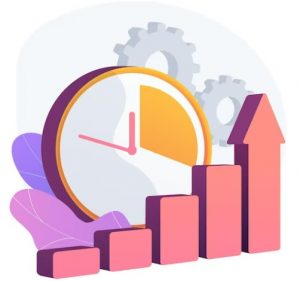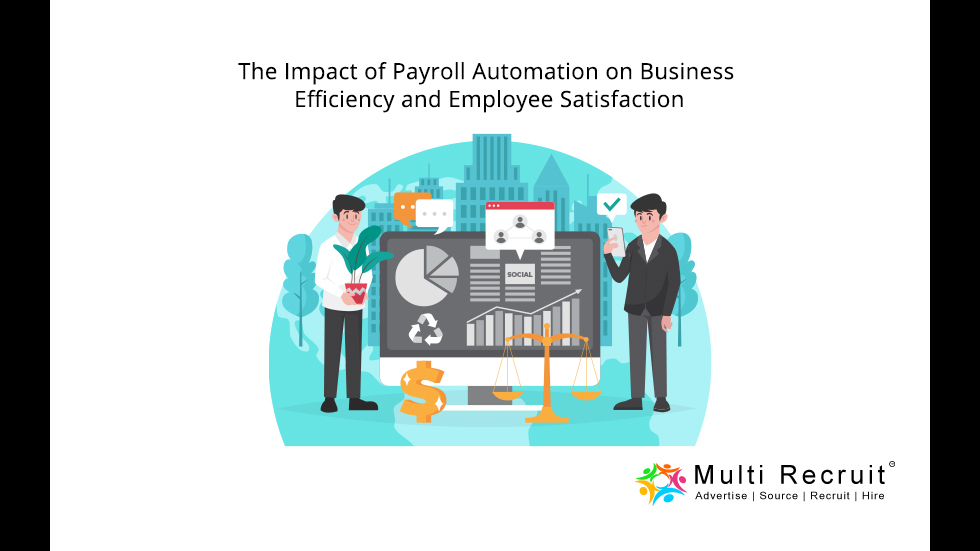Automation has revolutionized some of the most important areas of business management, without a doubt. For both small and large businesses, payroll management systems have by far made things simpler and more efficient.
Business leaders and managers are continuously improving their systems and streamlining their organizational structure thanks to a drastic and positive shift towards integrating business software and applications.
Let’s get to know more about payroll automation on business efficiency and employee satisfaction :
What are the benefits of Payroll Automation?
Our discussion of automated payroll has already touched on some of its benefits, but let’s dig deeper.
 Reduction of costs:
Reduction of costs:
An automated payroll solution has the obvious benefit of reducing costs. At this point, the financial benefits of automation have been well established. The Deloitte Global Robotic process automation(RPA) Survey found that 59% of respondents had reduced payroll costs since deploying automation software.
This could be due to an increase in efficiency; RPA will simply complete the process more quickly. This might be due to eliminating the costly and disruptive payroll errors that are a natural part of the process.
Because payroll professionals can work on alternative projects and reach their full potential due to RPA, they can also make a significant contribution to HR in other areas.

Productivity is improved:
Repeated, process-driven work over long periods of time is inherently difficult for humans. Everyone will inevitably become tired, bored, or interrupted at some point in their lives. A new starter’s administrative or salary processing tasks rarely offer constant stimulation and problem-solving.
 ROI (Return on Investment)
ROI (Return on Investment)
There is almost no comparison between the ROI delivered by RPA and other methods. The average ROI time frame was less than a year, according to studies by EY and Deloitte. Furthermore, its operating expenses (OPEX) are relatively low.
Automated payroll can be easily integrated with your existing payroll processes and systems without requiring costly or time-consuming changes.

A higher level of efficiency
Similar to the earlier point on productivity, RPA bots will complete payroll tasks more efficiently and use fewer resources than equivalent manual processes. Single tasks, like salary processing, can be greatly facilitated by this. You can dramatically improve your business’s efficiency by implementing RPA across several payroll processes.

Accuracy and compliance
Compliance is the first step. Businesses benefit from boosting regulatory compliance. Payroll departments can use this feature to ensure compliance with statutory tax reporting, which is often time-consuming and resource-intensive.

Assurance of reliability
Automation of payroll software solutions through RPA has the obvious benefit of being reliable. A cloud provider that offers guaranteed uptime is more likely to host RPA, due to its relatively simple nature. Unlike manual processes, RPA runs even when the office is closed or other business functions are out of order.
 Satisfaction with employees
Satisfaction with employees
A payroll solution that automates repetitive and manual processes improves employee satisfaction. This reduces employee workload and stress by allowing payroll teams to focus on more value-added tasks. Aside from that, employees spend less time fixing issues related to wages or tax rules because it is more accurate with administrative tasks.
How Ready Is Your Organization for Payroll Automation?
Payroll automation offers many benefits, but it’s important to assess whether your company is prepared. Consider these factors.
Payroll complexity: If you have a simple payroll structure with few employees, manual processing may suffice. Automating payroll can save you time and reduce errors if your company has multiple departments, varying pay rates, and complicated tax calculations.
The cost of payroll automation systems varies according to their customization and features. Consider automation in your budget and ensure it will yield a return.
Employee Buy-In: Employee buy-in is one of the most critical factors to determining payroll automation readiness. In order for a new system to succeed, your employees must be willing to learn, adapt, and embrace the benefits that it provides. Communication and training are essential for a smooth transition.
Compliance Requirements: Identify whether an automated system will help you meet your industry’s compliance requirements. Depending on whether your organization meets these criteria, you can consider payroll automation. For automation initiatives to succeed, employees must buy in. Explain the benefits of the new system to your staff early in the process. Make sure the transition is smooth by providing training and support.
Is your payroll services in need of an upgrade?
Are you looking to improve your payroll services? Upgrading your payroll systems and services can lead to increased efficiency, accuracy, and compliance with regulations. Keeping up-to-date with the latest trends and benefits your company needs can be as easy as upgrading an outdated system. If you would like to learn more, consider reaching out to Multi Recruit for further information.

